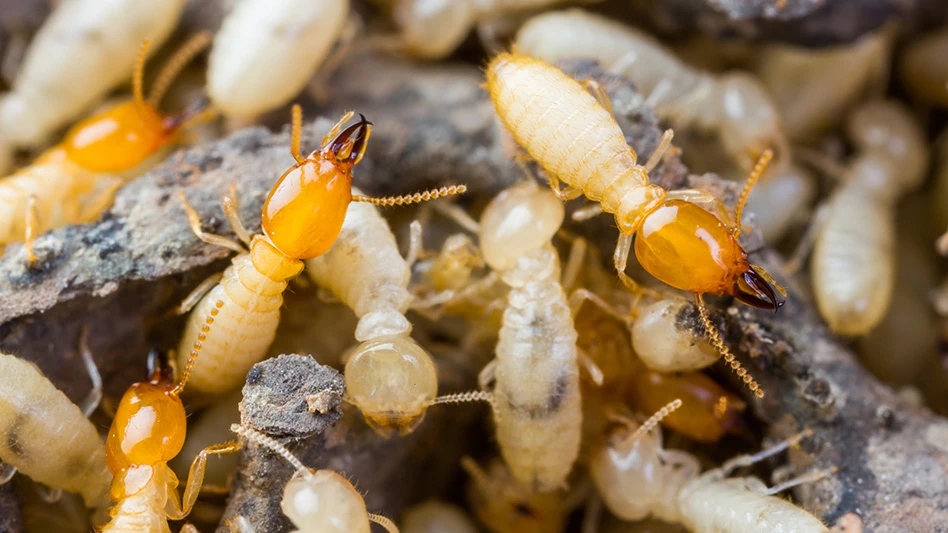PCT’s Oldest Subscriber?
I may be the oldest subscriber to Pest Control Technology magazine. I recall getting the first issue produced by a young son of a veteran PCO in Ohio. I started in the “exterminating” business in the 1940s, then advanced to a “pest control operator” and now have reached a higher level of recognition — “pest management professional.”
I am indeed fortunate to have lived long enough to have witnessed this maturation.
I may be the oldest veteran in the “battle of the bed bugs.” (My youngest brother, David, survived the epic “Battle of the Bulge” in WWII.) My mom, in the 1920s, got some relief by candling the bed springs under the mattress. I still recall the stench of roasted bed bugs.
In the 1940s, DDT had just been developed for the U.S. Army to dust thousands of Europeans and Americans for body lice control. With bed bugs rampant in just about every home in the U.S., as an “exterminator,” I was able to get good control of this blood sucker with this newly released hydrocarbon pesticide.
Many years later, when DDT was cancelled, I got good control by dusting diatomaceous earth under the sheet covering the mattress, and into crevices in the bedroom floor, walls and crevices in nearby furniture. This relatively harmless desiccant removes the protective, lipid film on the insect’s integument of the arthropod, allowing vital body fluids to evaporate.
I recall hearing Bill Buettner, the first president of the National Pest Control Association, in the basement office of his home in Brooklyn, N.Y., express fears for the future of the industry: “There may not be enough revenue to support the exterminators; they may have to find another source of income!”
For cockroaches. sodium fluoride was the standard remedy. It was dusted liberally in basements, kitchen cupboards, anywhere where the bugs were seen. Streaks of the dust were left on the walls of the basement to show we were doing something in order to get paid. (No exaggeration!) Years later, in Pittsburgh, Pa., several homeless men died after eating at a Salvation Army shelter. A baker had mistaken sodium fluoride insecticide for flour in baking bread. Congress then passed a new law, creating the Environmental Protection Agency. One of the first laws passed required sodium fluoride to be colored blue.
We have made much progress. Now, new toxicants must undergo rigorous tests for possible carcinogenicity. The tests are done on rodents and other vertebrates that have been bred to be super sensitive to any potential toxicant. The result, in my opinion, has been disastrous. It may have saved a hundred lives. But it also caused many thousands of deaths, mostly in Third-World countries. Where a few ounces of DDT sprayed on the inside wall of a hut could have killed mosquitoes, which killed hundreds of thousands of people, the new laws cancelled the registration of this hydrocarbon in the United States. Other countries followed.
This was the unintended consequence of a well-intentioned reformer, Rachel Carson. In her book Silent Spring, she selected only tests that showed negative results and possible hazards of the new toxicants, totally ignoring the more numerous tests showing safety. I treated her neighbor’s house in a suburb of Pittsburgh, Pa., for termites with chlordane. She was worried that the poison would affect her!
These are historical facts that you cannot find anywhere, except in the mind of a 96-year-old “exterminator.” In this overview of the maturation of our industry, we must not overlook the important role played by two publications: the Mallis Handbook of Pest Control edited by Stoy Hedges and the NPCA Field Guide by Eric Smith and Richard Whitman. The monthly column I wrote for PCT magazine for many years, Myth Conceptions, also may have helped.
Harry L. Katz
Board Certified Entomologist
Richmond Hill, N.Y.
Readers are invited to write to PCT Letters, 4020 Kinross Lakes Parkway, Richfield, OH 44286 or send an e-mail to jdorsch@giemedia.com. Letters may be edited for space or clarity.
WANT MORE?
Enter your email to receive our newsletters.

Explore the January 2012 Issue
Check out more from this issue and find your next story to read.
Latest from Pest Control Technology
- Riata Capital Group Sells Greenix Pest Control to Gridiron Capital
- Hoffer Pest Solutions: 50 Years Strong
- Tova Barbour's Goals on Growing Pest Control Retention & Diversity
- Aruza Pest Control Shares New Company Core Values
- Rentokil Terminix Acquires Pair of California Companies
- From Itchy Bites to Asthma Triggers: Why One UF/IFAS Scientist Studies What’s Bugging Us
- Liphatech Introduces BugScents Sentry Pro
- Syngenta's Tim Husen on Cockroach Control, Products in Latest Cockroach Market Report






